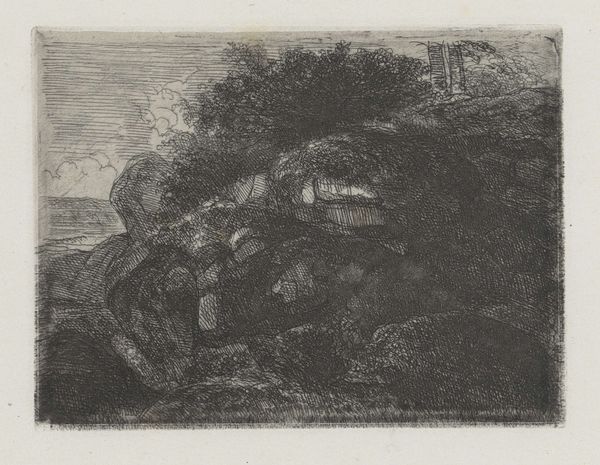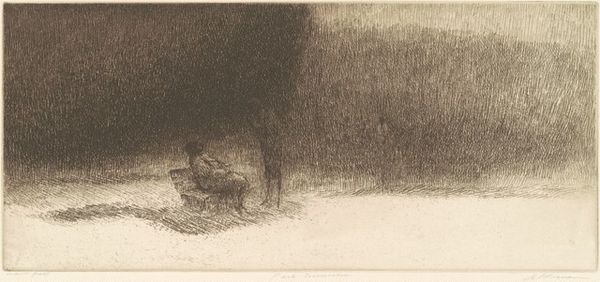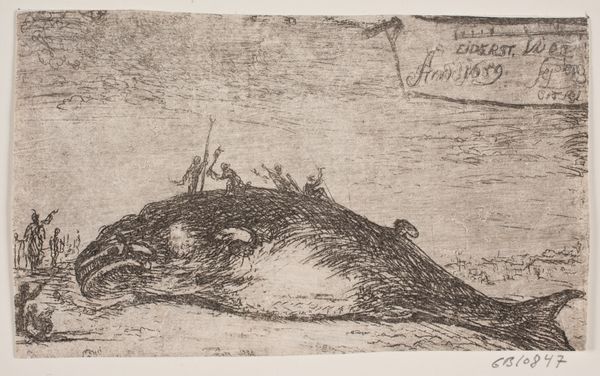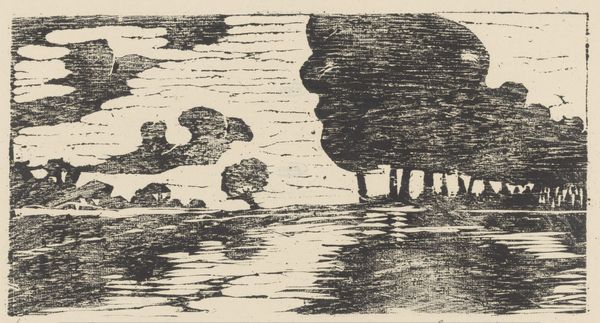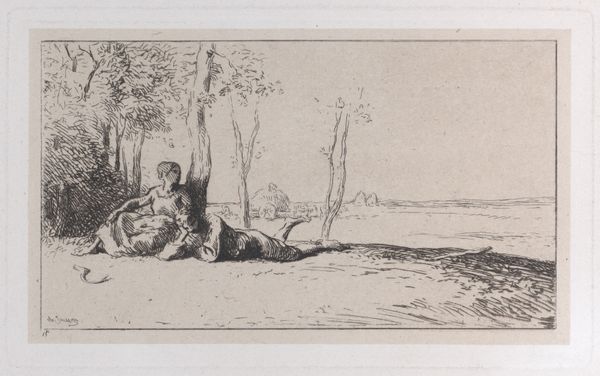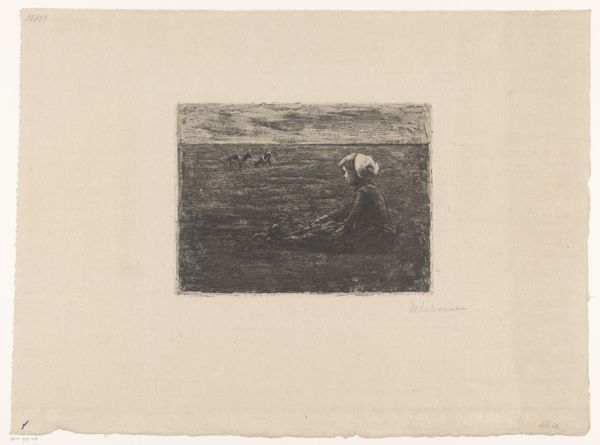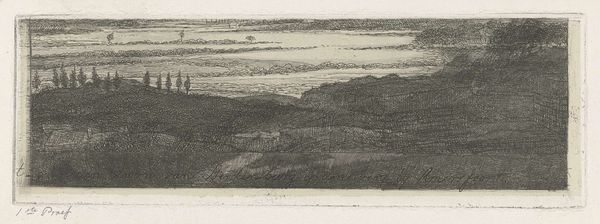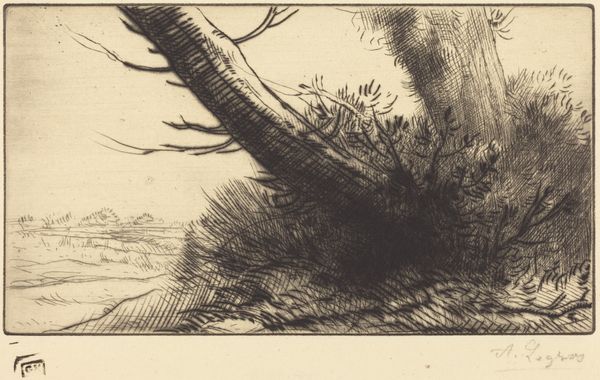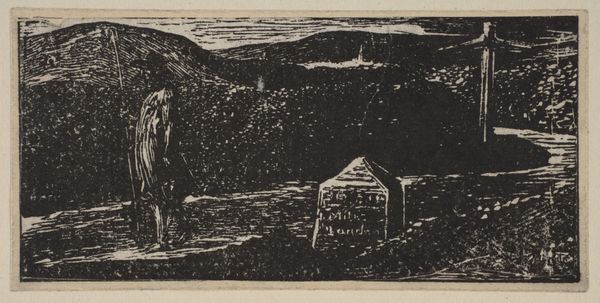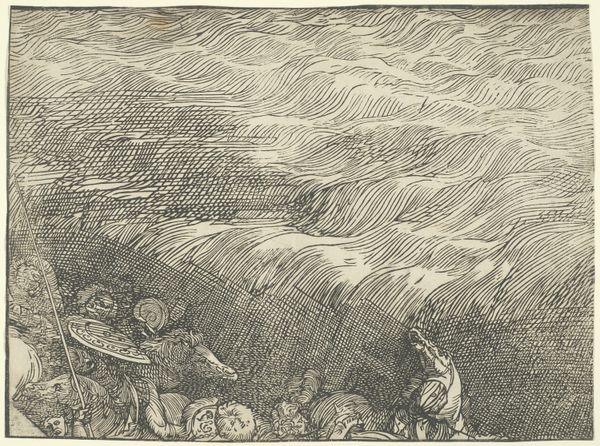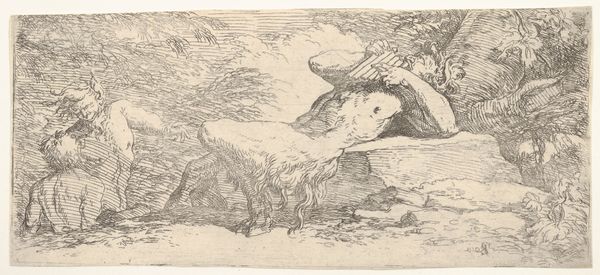
Dimensions: 1 1/2 × 4 1/8 in. (3.81 × 10.48 cm) (image)1 3/4 × 4 1/2 in. (4.45 × 11.43 cm) (sheet)
Copyright: Public Domain
Curator: Editor: So, this is William Holman Hunt's "The Desolation of Egypt," an etching from 1857 currently residing in the Minneapolis Institute of Art. It feels strangely quiet and desolate, as the title suggests. What strikes you most about this piece? Curator: What immediately catches my eye is the use of etching. We tend to think of "Desolation of Egypt" through grand narratives, of fallen empires. But Hunt renders this with the very humble and laborious process of etching. Think about the material realities: the copper plate, the acid bath, the careful, repetitive work. What does this say about Victorian England’s relationship to empire? Editor: That's interesting. I hadn’t considered the physical making of the work, focusing more on its historical narrative. The Victorian period romanticized empire. Could Hunt be highlighting a tension here, almost domesticating a faraway historical event through this quiet craft? Curator: Exactly! Notice the scale as well; it's not a grand history painting, but a small print, something reproducible, consumable. Consider too the availability and appeal of prints at this time – cheaper to produce, so a wider audience could have bought the art, what’s that telling us about the culture and expectations surrounding art in the mid 19th Century? Editor: It seems like a commentary on the consumption of history and maybe a wider commentary about labour versus commodity. I originally saw the print as something that documented a specific event but now the physical processes seem really important, like Hunt wanted you to see the means of its production. Curator: Precisely. He directs our attention not just to the subject, but the means of conveying it. So, in essence it is a document on consumption. Editor: I learned how a relatively available process, like etching, challenges some common conceptions surrounding the divide between art and commodity. Now it also provides insight into art viewership during the Victorian Era. Thank you! Curator: A rewarding insight to our historical interpretation; thinking through the materials certainly illuminates other elements in the work.
Comments
No comments
Be the first to comment and join the conversation on the ultimate creative platform.
